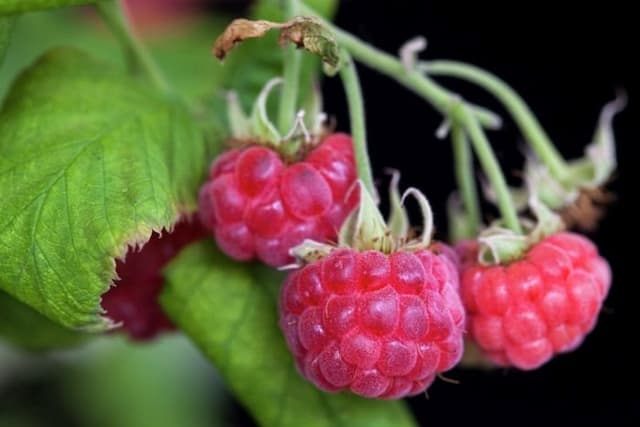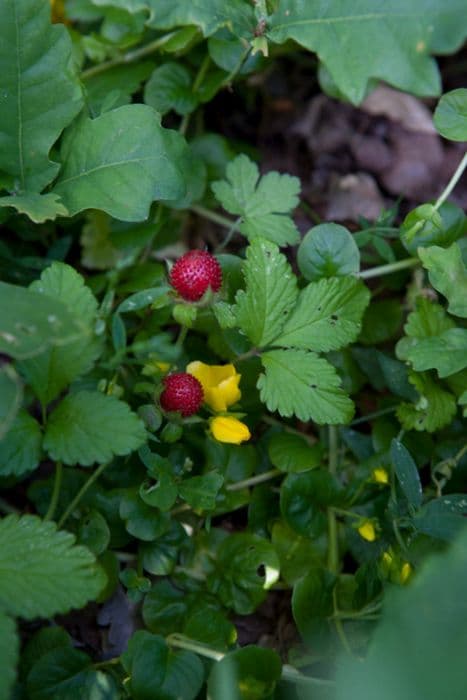Loquat Eriobotrya japonica (F)

ABOUT
Eriobotrya japonica, commonly known as Loquat, is an evergreen plant with a short trunk and a rounded canopy. The leaves of the Loquat are quite distinctive; they are large, leathery, and dark green with a glossy surface and a woolly, pale underside. The leaf shape is elongated and some may describe it as lanceolate or oblong with serrated or slightly toothed edges, contributing to a bold texture in the landscape. The Loquat flowers are fragrant, with a sweet aroma, and they grow in clusters at the end of the branches. Typically, the flowers are white and have a structure that may remind you of a small blossom with petals surrounding a central core of reproductive parts, but without the technical terms related to flower anatomy. Regarding the fruit, which is the characteristic feature many people know this plant for, they are small, rounded, or pear-shaped, and usually an orange or yellow when ripe. The skin of the fruit is smooth and may have a downy fuzz, while inside you'll find a succulent, tangy flesh that is both sweet and slightly acidic, with one or several brown seeds. The overall aspect of the Loquat plant is lush and tropical, and its leaves, flowers, and fruits all contribute to a rather exotic yet graceful appearance.
About this plant
 Names
NamesFamily
Rosaceae.
Synonyms
Japanese Loquat, Loquat, Biwa, Japanese Plum, Chinese Plum, Japanese Medlar, Nispero.
Common names
Mespilus japonicus, Photinia japonica.
 Toxicity
ToxicityTo humans
The plant known commonly as loquat is not considered highly toxic to humans. However, like many fruit trees, the seeds, leaves, and other non-fruit parts of the loquat can contain small amounts of cyanogenic glycosides, which can release cyanide when ingested. In general, eating moderate amounts of loquat fruits is safe, as the flesh does not contain these compounds. Accidental ingestion of seeds or leaves in small quantities typically does not lead to severe symptoms. However, if large amounts are consumed, symptoms can include difficulty breathing, nausea, and dilated pupils. In extreme cases, this could lead to poisoning, which may require medical attention. It is always advised that only the fruit's flesh is eaten and seeds, leaves, and other parts are avoided.
To pets
The loquat plant may pose similar risks to pets as to humans. The fruit's flesh is not toxic to pets, but its seeds, leaves, and stems can contain cyanogenic glycosides which release cyanide when digested. If a pet ingests large quantities of these parts of the plant, potential symptoms of poisoning include vomiting, difficulty breathing, and lethargy. More severe cases of poisoning can lead to collapse and even death if not treated promptly. If a pet has ingested a significant amount of loquat seeds or leaves, it is necessary to seek immediate veterinary care. Owners should ensure pets are not allowed to chew on any part of the plant other than the fruit's flesh.
 Characteristics
CharacteristicsLife cycle
Perennials
Foliage type
Evergreen
Color of leaves
Green
Flower color
White
Height
10-30 feet (3-9 meters)
Spread
10-15 feet (3-4.5 meters)
Plant type
Tree
Hardiness zones
8-11
Native area
China
Benefits
 General Benefits
General Benefits- Nutrition - Eriobotrya japonica, commonly known as loquat, offers a variety of nutrients through its fruits, including vitamins A, B, and C, minerals, and dietary fibers.
- Culinary Use - The loquat fruits are edible and can be used in a variety of culinary preparations, from jams and jellies to pies and salads.
- Aesthetic Appeal - With its glossy green leaves, fragrant flowers, and attractive fruit clusters, the loquat tree is commonly used in ornamental landscaping for its visual appeal.
- Shade Provider - As a subtropical tree, loquat can grow to a decent size and provide shade in gardens and patios, making it a valuable addition for creating cooler areas during warm seasons.
- Wildlife Support - The tree can attract birds and pollinators, such as bees and butterflies, which are important for the ecosystem and for the pollination of other plants.
- Drought Resistance - Once established, loquat trees are relatively drought-tolerant, making them suitable for xeriscaping and landscapes where water conservation is important.
- Erosion Control - The loquat's root system helps to prevent soil erosion, especially on slopes or in areas prone to losing topsoil to water or wind.
- Windbreak - The trees can be planted in rows to act as windbreaks, protecting other plants and reducing wind speeds in gardens and agricultural settings.
 Medical Properties
Medical Properties- Antioxidant: Loquat leaves contain compounds like flavonoids and phenolic acids, which have antioxidant properties.
- Anti-inflammatory: Traditional use includes the treatment of inflammation, supported by the presence of various anti-inflammatory agents in the leaves.
- Antidiabetic: Some studies suggest that loquat leaf extracts can help lower blood sugar levels.
- Antimicrobial: The plant has been shown to have antimicrobial activity against some bacteria and fungi.
- Antitussive and expectorant: Loquat syrup is traditionally used to soothe the throat and aid in the relief of cough.
- Hepatoprotective: Some research indicates loquat leaves might have liver-protecting properties.
- Anti-cancer: There is preliminary research suggesting that certain compounds in loquat may have anti-cancer properties.
 Air-purifying Qualities
Air-purifying QualitiesThis plant is not specifically known for air purifying qualities.
 Other Uses
Other Uses- Eriobotrya japonica, commonly known as loquat, can be used in the production of fruit leather by puréeing and dehydrating the flesh, making a natural and sweet snack.
- The wood of the loquat tree is hard and durable, making it useful for creating handles for tools or small wooden objects.
- Loquat leaves can be used as a natural dye, providing colors ranging from yellow to brown when used in textile dyeing processes.
- The loquat tree can serve as a natural windbreak or privacy screen in gardens due to its dense foliage and fast-growing nature.
- When fermented, loquat fruit can be transformed into a fruity wine or cider, offering an alternative to more common fruit wines.
- Loquat seeds have been used to craft jewelry or buttons, taking advantage of their uniform shape and smooth texture after proper treatment.
- In bonsai culture, loquat trees can be trained into miniature artistic shapes, showcasing the tree's attractive leaves and structure.
- Loquat fruit can be pureed and used in sauces or glazes for savory dishes, adding a sweet and slightly tart flavor profile.
- Leaves from the loquat tree can be incorporated into potpourri or sachets, contributing to a natural, fruity aroma for home fragrance purposes.
- The dense canopy of loquat trees offers habitat and nesting sites for various species of birds and beneficial insects, promoting biodiversity in gardens.
Interesting Facts
 Feng Shui
Feng ShuiThe Loquat tree is not used in Feng Shui practice.
 Zodiac Sign Compitability
Zodiac Sign CompitabilityThe Loquat tree is not used in astrology practice.
 Plant Symbolism
Plant Symbolism- Longevity: The Eriobotrya japonica, commonly known as the Loquat, produces fruit that is rich in vitamins, minerals, and antioxidants. This association with health and vitality lends the plant its symbolic meaning of a long and healthy life.
- Protection: In some cultures, the Loquat tree is believed to offer protection due to its evergreen nature, representing a constant and enduring shield.
- Prosperity: The abundance of fruit that the Loquat tree produces is often associated with wealth and prosperity, symbolizing an abundance of resources and plenitude.
- Renewal: The Loquat blooms in late autumn or early winter when few other plants flower, signifying new beginnings and rejuvenation, as it heralds the upcoming spring.
 Water
WaterLoquat trees, commonly known as Eriobotrya japonica, should be watered deeply to ensure moisture reaches the roots, especially during the establishment phase and the warmer seasons. A mature loquat tree typically requires watering every couple of weeks, with adjustments made for rainfall and climate conditions. During the active growing season in spring and summer, the loquat may need approximately 20-40 gallons of water every two to three weeks, depending on soil type and weather. During the dormant season in fall and winter, water less frequently, allowing the soil to dry out between waterings to prevent root rot.
 Light
LightLoquat trees thrive in full sun to partial shade, with at least six hours of direct sunlight each day to ensure good fruit production and healthy growth. They perform best when planted in a spot that receives morning sun and some afternoon shade, particularly in hotter climates, to protect them from the harsh afternoon sun.
 Temperature
TemperatureLoquat trees are hardy and can tolerate a wide range of temperatures, but they grow best when the temperature remains between 45°F and 85°F. They can withstand occasional dips down to around 25°F, but temperatures below this can damage the leaves and fruit. Ideal conditions are provided by mild winters and warm (not excessively hot) summers.
 Pruning
PruningPrune loquat trees annually to maintain shape, encourage fruit production, and remove any dead or diseased wood. The best time to prune is after the tree has finished fruiting, usually in late spring or early summer. Thinning out dense foliage also helps to improve air circulation and sunlight penetration, which is essential for the health of the tree.
 Cleaning
CleaningAs needed
 Soil
SoilLoquat trees (Eriobotrya japonica) thrive best in well-draining soil with a slightly acidic to neutral pH, ideally ranging from 5.5 to 7.5. A good soil mix can be made by blending equal parts of loam, peat, perlite, and well-rotted compost to ensure proper drainage and fertility.
 Repotting
RepottingLoquat trees should be repotted every 2 to 3 years to prevent becoming root-bound and to refresh the soil. Younger trees might need repotting more frequently, especially if they are growing rapidly or appear to be outgrowing their current pots.
 Humidity & Misting
Humidity & MistingLoquat trees are adaptable to a wide range of humidity levels but perform best in moderate to high humidity environments. They do not require any special humidity adjustments when growing outdoors in their preferred climate.
 Suitable locations
Suitable locationsIndoor
Place loquat in bright light, away from drafts, with room to grow.
Outdoor
Plant in full sun, well-drained soil, shield from strong winds.
Hardiness zone
8-10 USDA
 Life cycle
Life cycleThe Loquat (Eriobotrya japonica) starts its life cycle with seed germination, which occurs in warm, moist soil conditions usually in spring or early summer. After germination, the seedling grows into a juvenile tree, developing a strong root system and foliage. As the tree matures, it enters a vegetative state, where it grows leaves and branches, becoming a fully established tree. Following the vegetative stage, the Loquat tree reaches reproductive maturity, typically within 2-3 years, and begins to flower in the late autumn to early winter. After pollination, the flowers develop into small, pear-shaped fruits that ripen during late winter or spring. Once the fruit is mature, the cycle can begin again when seeds from the fruit are dispersed and find suitable conditions to germinate.
 Propogation
PropogationPropogation time
Late Winter - Early Spring
The Loquat tree, or Eriobotrya japonica (F), is commonly propagated through seed sowing, cuttings, grafting, or air layering. However, the most popular method is via cuttings, particularly semi-hardwood cuttings. This is typically done in late summer. For this process, cuttings of about 4 to 6 inches (10 to 15 cm) long from the current year's growth are selected. The leaves from the lower half of the stem are removed, and the cut end is often treated with a rooting hormone to encourage root growth. The cutting is then placed in a well-draining rooting medium such as a mix of peat and perlite. The environment should be kept humid, and the medium consistently moist until the cuttings have rooted, which usually takes a few weeks to a couple of months depending on the conditions.









